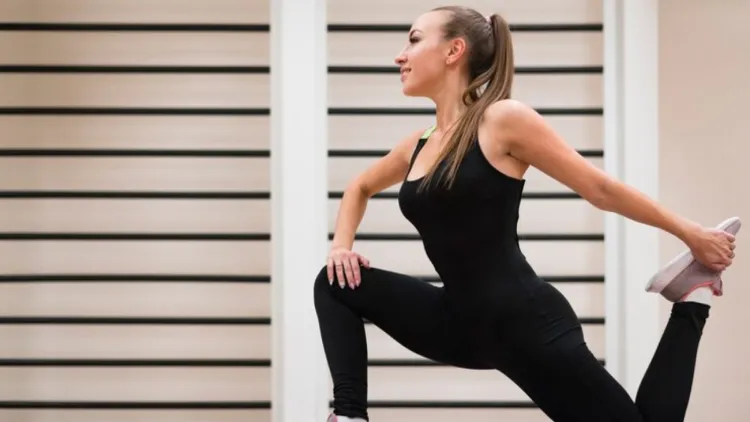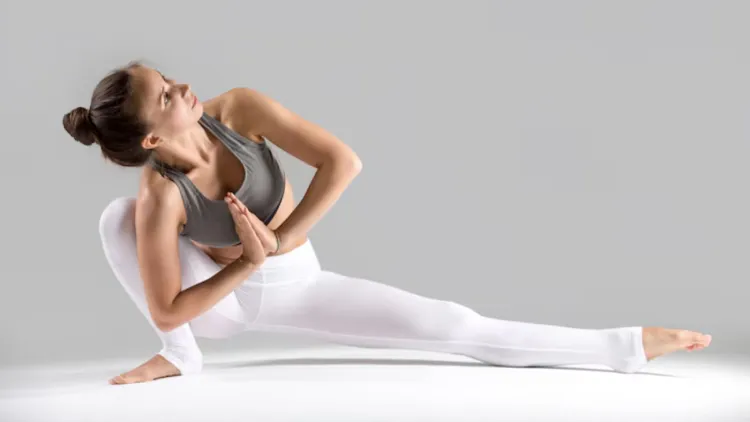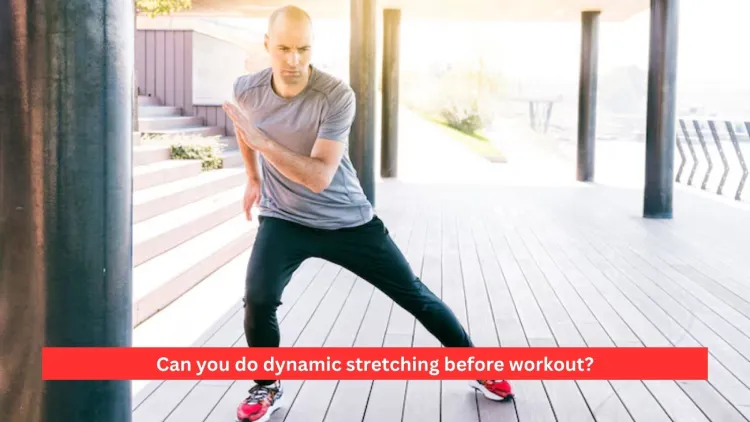Yep – it could even be the most significant part of your exercise program you are neglecting.
In case you are asking, can you do dynamic stretching before workout, then the answer is definitely yes. It is one of the most intelligent methods of how to make your body ready for physical efforts. Dynamic stretching is the process of driving business forward through active movements applied to speed your heart rate, activate muscles, and loosen joints, unlike traditional, static stretching, whereby position is retained. The movements are realistic and thus they simulate what your body has to do during the exercise, thereby being efficient and effective warm-up techniques.
Dynamic stretching can be used to improve your performance (no matter whether you are hitting the gym, performing weight lifting or playing a sport, going out on a run, or performing yoga) and decrease your risk of injury. Within minutes, your blood flow improves, your mobility is enhanced, and your nervous system is all set at effective firing.
In this article, we’ll answer the big question: Can you do dynamic stretching before workout? — and explain why you should. You’ll learn:
- What exactly is dynamic stretching?
- The reason why it is more effective than pre-exercise stretching
- When it should be done and when it should not be done
- What is to be accommodated under various types of workouts
After reading, you will have a clear guideline on how to incorporate dynamic stretching in your warm-up and never miss it again.

What Is Dynamic Stretching?
Dynamic stretching is the type of stretching during which you move constantly within a complete row of motion. Contrary to the process of static stretching (where you maintain a position 15-60 seconds), the dynamic ones consist of movement in which your joints and muscles are stretched to the limit but in a controlled manner.
Exercise movements raise the temperature of the muscles, enhance the efficiency of neuromuscular coordination and lubricate the joints, which are all prerequisites prior to any exercise.
Some of the typical examples are as follows:
- Shoulder mobility,Arm circles
- Hip and hamstring bend leg swings
- Glute, quad and core activation: walking lunges
- Torso twists to mobilise the spine and obliques
- High knees or jump jacks to raise the heart rate
Dynamic stretching, then, is not so much about flexibility, but it is about the readiness to move. It also replicates the exercises you are about to work with and progressively intensifies them, and so, it is most commonly used in warming up.
Why You Should Do Stretching (Can You Do Dynamic Stretching Before Workout?)
Dynamic stretching is beneficial in preparation for a workout based on a number of science-based reasons. So, we will take a closer look at them:
1. Increases Blood Flow
Dynamic stretching increases the circulation. The more you go through active stretches, the better your heart rate rises and circulates richer blood circulates in your muscles. Such oxygen supply is beneficial in ensuring that the muscles are able to operate more effectively and adapt better towards the requirements of an exercise.
Blood is not circulated; muscles are cold and unelastic, which raises the chance of being torn, pulled or experiencing cramps. Dynamic stretching ensures that your body is still warm so that you are ready to go.
2. Enhances Performance
Several research studies have supported the fact that dynamic stretching may cause improvement in the outcomes of a workout. In athletes, warm-ups increase explosive power, sprint speed and vertical leap. To fitness enthusiasts, in general, it enhances their skills in lifting, moving, and controlling their bodies.
Why is it so? Dynamic stretches make muscles more coordinated because of the increased neuromuscular coordination. Your neurological system and muscles begin to communicate with each other, and it improves reactions, makes you and your movements more stable and makes your mechanisms of movement faster.
In another sense of example, use hands-off walking lunges and then follow it up with squats; this will stimulate the same chains (glutes, quads, and hamstrings), allowing you to get deeper into a safer squat.
3. Improves Flexibility and Mobility
Dynamic stretching is a technique that stretches your muscles very gently so that you take them to their complete range of movement. This offers functional mobility and flexibility of joints over time, which is just what you need in case your hips, shoulders, or hamstrings are rigid.
Dynamic movements produce an active state of the muscles, unlike static ones, which can lead to short-term muscle relaxation (not a good idea before the workout), but they can also stimulate flexibility. This implies that you are less tied down since there is no loss of muscle control and power.
4. Activates the Nervous System
The peculiar advantage of dynamic stretching is that it preconditions your central nervous system (CNS). It happens in the CNS when fast messages need to be delivered to the brain or the muscles. A well-stimulated CNS can make you more accurate, stronger and receptive in your movements.
This is augmented by including dynamic movements such as high knees, skips or butt kicks. Consequently, you are better positioned to respond to prompt changes, including reducing instructions in sports or handling weighted barbells, in the gym.

When to Do Dynamic Stretching
Timing matters. In order to gain the best out of dynamic stretching, it is supposed to be performed immediately prior to your exercise, after engaging a little light general exercise like walking or jump jacks.
To organise it, you should do it like this:
- Increase your cardiovascular system by walking briskly, slowly jogging or rope jumping.
- Concentrate on movements that aim at working on the muscle groups that you will be using during the exercise.
When NOT to do dynamic stretching:
- Do not take it during workouts in those moments when you aim to restore. It is at that time when static stretching or foam rolling would be more suitable.
- Dynamic stretching is not to be done when one is injured or is having acute pain in muscles. The cases are better managed with rest and rehab.
Best Dynamic Stretches to Try
Dynamic stretches have the capacity to be changed according to the area of the body you are working on. a list of highly useful movements according to the type of workout:
To do a Full-Body Warm-Up:
- Jumping jacks – Warm up your heart, massage system
- High knees make your core and legs work, as well as stretch, Stephen King
- Butt kicks- Hamstrings and glutes warm up
In case of Lower Body Workouts:
- Leg swing ( Back to front and side to side )- Relax the hips and hamstrings
- Twisted walking lunges- Activate core, glutes, Quads
- Bodyweight squats: Mobilisation of knees, hips, and ankles
- Hip circles -Enhance the range of movement of the hip joints
In case of Upper Body Workouts:
- Arm circles -release shoulders
- Arm swings (across chest) -stretch chest and rear delts
- Torso twists, spinal and core movement are activated
- Push-up walkouts- Warm up chest, shoulders and hamstrings
In case of Sports or High-Intensity Training:
- Skater jumps -Use coordination and stabiliser muscles
- A-skips or B-skips -Enhancement of running mechanics
- Carioca drills enhance the lateral movement, balance
Pro tip: Select 4 6 of your favourite stretches and hold each one 20 30 seconds, and repeat the whole exercise 2 times to get a full 5 10 minute warm-up.
What About Static Stretching?
You do not want to perform static stretching (where you maintain a stretch for 15 to 60 seconds), which is the traditional type of stretching exercise, before a workout.
Why? It might temporarily reduce muscle power, strength, and reaction time. That is, stretching the deep hamstring prior to the deadlifts may impair your performance.
And that is not because static stretching is bad at all, it is only better done when you have already completed your exercise. Static stretches after working out can remedy muscle pain, aid in heating flexibility, and facilitate recovery.
Here’s a quick breakdown:
| Stretching Type | When to Do It | Purpose |
| Dynamic Stretching | Before workout | Warm-up, improve performance, prevent injury |
| Static Stretching | After workout | Cool down, improve flexibility, aid recovery |

Conclusion
So, can you do dynamic stretching before a workout?
Yes, it is good, and you must include it in any exercise regime. There is dynamic stretching, which is a very good tool of warming up, increasing performance and avoiding injury. It also assists your body to smoothly switch into a state of movement from a state of rest, and particularly when the exercise acts as a mimic of what you are about to undertake.
A few 5-10-minute dynamic stretches to add to your pre-gym routine will make you feel more energised but also improve your performance and decrease the chances of strains or sprains.
The first step is to make an initiative, lift, run, or jump; your body will appreciate it.
Frequently Asked Questions
1. Can you do dynamic stretching before workout to prevent injury?
Exercise helps prevent injury because muscles are warmed up, there is an increased blood supply, and joint mobility is improved.
2. What are the top dynamic stretches before a workout?
Examples of good pre-workout stretches in the legs include leg swings, arm circles, high knees, walking lunges, and torso twists.
3. What is the duration of dynamic stretching?
It should be 510 min. Take 20-30 seconds to perform each stretch and repeat 2 times.
4. Which is superior, dynamic or pre-exercise static stretches?
Yes, before workouts, dynamic stretching is superior. Post-exercise static stretching sessions help to recover.







